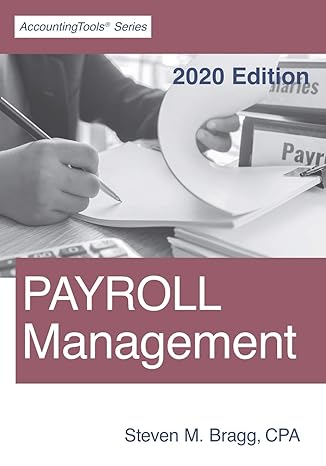Question
Developing a Master Budget for a Merchandising Organization Peyton Department Store prepares budgets quarterly. The following information is available for use in planning the second
Developing a Master Budget for a Merchandising Organization Peyton Department Store prepares budgets quarterly. The following information is available for use in planning the second quarter budgets for 2014. Peyton Department Store Balance Sheet March 31, 2014 Assets Cash - $3000 Accounts receivable 25,000 Inventory 30,000 Prepaid insurance 2,000 Fixtures 25,000 Total assets $85,000 Liabilities and Stockholders Equity Accounts payable $26,000 Dividends payable 17,000 Rent payable 2,000 Stockholders equity 40,000 Total liabilities & equity $85,000 Actual and forecasted sales for selected months in 2014 are as follows: Month Sales Revenue Jan $60,000 Feb 50,000 March 40,000 Apr 50,000 May 60,000 June 70,000 July 90,000 Aug 80,000 Monthly operating expenses are as follows: Wages and salaries $25,000 Depreciation 100 Utilities 1,000 Rent 2,000 Cash dividends of $17,000 are declared during the third month of each quarter and are paid during the first month of the following quarter. Operating expenses, except insurance, rent, and depreciation, are paid as incurred. Rent is paid during the following month. The prepaid insurance is for 5 more months. Cost of goods sold is equal to 50% of sales. Ending inventories are sufficient for 120 % of the next months sales. Purchases during any given month are paid in full during the following month. All sales are on account, with 50% collected during the month of sale, 40% during the next month, and 10% during the month thereafter. Money can be borrowed and repaid in multiples of $1,000 at an interest rate of 12% per year. The company desires a minimum cash balance of $3000 on the first of each month. At the time the principal is repaid, interest is paid on the portion of principal that is repaid. All borrowing is at the beginning of the month, and all repayment is at the end of the month. Money is never repaid at the end of the month it is borrowed. a. Prepare a purchases budget for each month of the second quarter ending June 30, 2014 b. Prepare a cash receipts schedule for each month of the second quarter ending June 30, 2014. Do not include borrowings. c. Prepare a cash disbursements schedule for each month of the second quarter ending June 30th, 2014. Do not include repayments of borrowings. d. Prepare a cash budget for each month of the second quarter ending June 30, 2014. Include budgeted borrowings and repayments. e. Prepare an income statement for each month of the second quarter ending June 30, 2014. f. Prepare a budgeted balance sheet as of June 30, 2014.
Step by Step Solution
There are 3 Steps involved in it
Step: 1

Get Instant Access to Expert-Tailored Solutions
See step-by-step solutions with expert insights and AI powered tools for academic success
Step: 2

Step: 3

Ace Your Homework with AI
Get the answers you need in no time with our AI-driven, step-by-step assistance
Get Started


